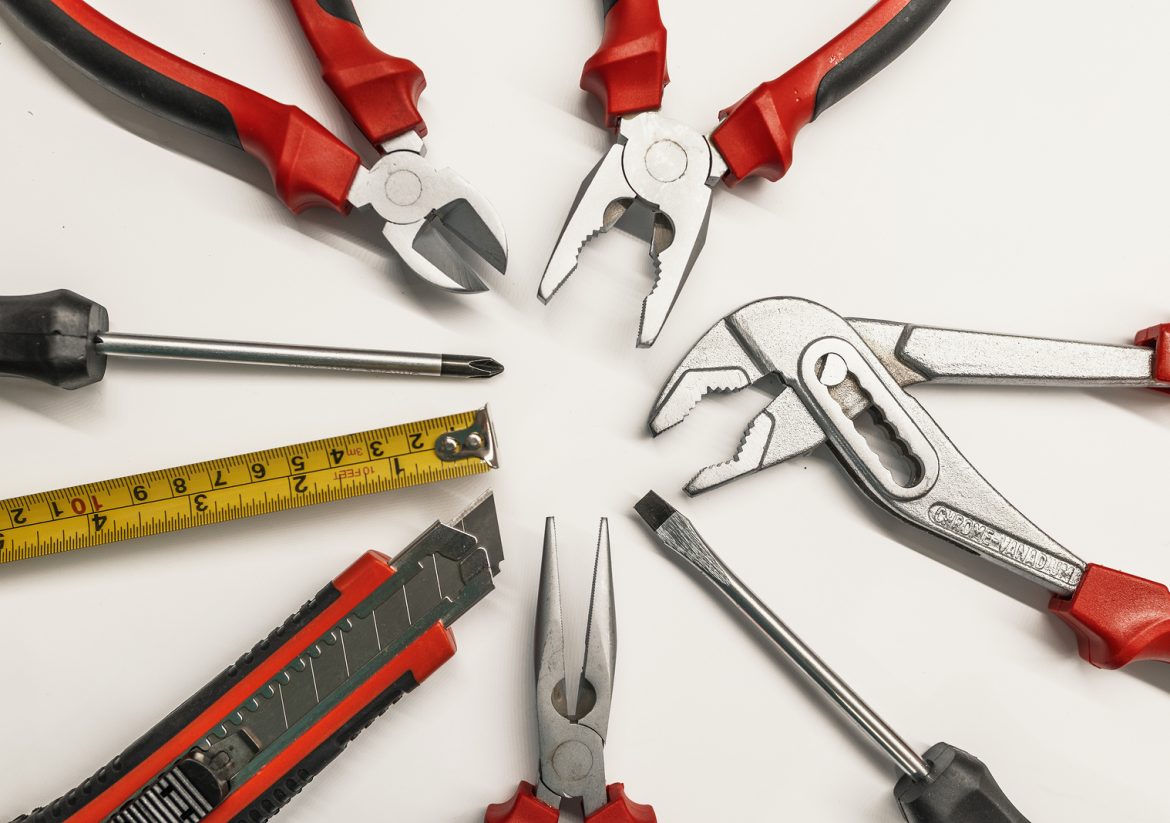Cable cutters, diagonal cutting pliers, linesmen pliers, and bolt cutters. Which is the correct tool?

Cable cutters, diagonal cutting pliers, linesmen pliers, and bolt cutters. Which is the correct tool?
All of these tools are common cutting tools, but each one has a specific application where it works the best. Although some can work in other categories, it’s best to keep to what is going to be the most successful. For example, you wouldn’t use a bolt cutter to cut a piece of number 14 wire. The appropriate tool for this is either a linesmen’s plier or diagonal cutting pliers. You could, of course, use a cable cutter. Generally speaking, a cable cutter is a much larger unwieldy device, whereas an 8 or a 10 inch pair of pliers is handy and will do the job efficiently and successfully. Needless to say there are many types of cutting tools, but the ones we’ve just mentioned are the most common and accessible for most people.
Diagonal cutting pliers, also called wire cutting pliers, are commonly used by electricians, and they are specifically designed to efficiently and effectively cut copper wire. Eight inch pliers work rather well with all wire sizes up to and including number 10. They are typically made from tempered tool steel, and they will have comfortable TPR, which means thermo plastic, rubber grips which both make the cutting process comfortable, and provide some degree of insulation (always turn the electric power off when working with live electricity and do not depend on the tool’s insulation for protection as this could be a fatal error). The pliers have two jaws that are wedge shaped to a sharp edge, and the two jaws meet almost precisely when the plier is closed all the way. This very effectively cuts copper wire, although they can be used on steel aluminum wire, but generally speaking if used on steel wire, you’ll end up with excessive blade wear.
We next move onto a linesmen’s pliers, which when it comes to doing electrical work, cutting copper and aluminum wire are just as effective as diagonals. However, they cannot reach into tight places, as they are limited because the tip is flattened so that you can actually use them as pliers to compress, grip, and pull. They typically come in 6, 8, 10, and 12 inch sizes.
Now we move on to cable cutters. Cable cutters are different from bolt cutters, linesmen’s pliers, and diagonal pliers in that the blades do not meet. In fact, the blades bypass. In addition, the blade and blade housing is typically made out of forged and tempered tool grade steel, and made thick enough and strong enough so they have limited or zero deflection when cutting heavy steel, copper, or aluminum cables. In fact, they are the only tool of the group that can effectively cut this type of material. Linesmen’s pliers and diagonal pliers cannot do it, and bolt cutters, as we’ll discuss later on, are designed differently, and therefore will not be able to accomplish the task of cutting cables. In addition, the blades of cable cutters are hooked so that they can effectively grip around a cable to hold it in place, and then execute the cut. There is a second version of cable cutter for cutting extremely heavy and thick cable, and that one has a ratcheting mechanism allows the user to slowly and progressively execute a cut on cables that would otherwise be impossible to cut in a conventional manner. In addition, since cable cutters have a usually difficult task ahead of them, they can be found with handles ranging from 1’-4’ long to provide additional leverage.
Now we get to bolt cutters. They are called bolt cutters, but I think you could more correctly call them bolt pinchers, because the blades do not actually come together. When properly adjusted or fully closed, the blade edges on a bolt cutter will typically be one or two thousands of an inch apart. What the bolt cutter does effectively is pinch through the material to the point where the material becomes so weak that it easily snaps or breaks off. Not surprisingly bolt cutters are frequently referred to as lock cutters. Of course the utility of a lock cutter is a matter of perspective. Some people lose a key and need to compromise a lock to gain access. Other people could care less whether they have a key or not. You be the judge. Bolt cutter blades and mechanisms are heat treated drop forged tool steel to give them the ability to cut through hard material. You cannot expect a blade with an HRC 35 hardness to cut a lock shackle with an HRC 65 hardness. To do that job you need something equal to, or harder, which is what a bolt cutter does. The blades are extremely hard and extremely strong. Bolt cutters are used in numerous applications, and there are several manufacturers of bolt cutters such as Porter Cable, Tekton, Stanley, Craftsman, and Tech Team https://techteamproducts.com/. We happen to like Tech Team’s because they are drop forged hardened tool steel, adjustable, and have comfortable rubber grips. They are manufactured in sizes of 8” length https://www.amazon.com/Mini-Bolt-Cutter-Spring-Loaded-Comfortable/dp/B079SPZC1G/ref=sr_1_3?ie=UTF8&qid=1546894097&sr=8-3&keywords=tech+team+8%22+bolt+cutter 12”length https://www.amazon.com/Cutter-Compound-Action-Cable-Comfortable/dp/B079T9YMV8/ref=sr_1_4?ie=UTF8&qid=1544568105&sr=8-4&keywords=tech+bolt+cutter and 14” length https://www.amazon.com/Tech-Cutter-Compound-Action-Comfortable/dp/B07JNCFRKL/ref=sr_1_3?ie=UTF8&qid=1546894228&sr=8-3&keywords=tech+team+14%22+bolt+cutter which makes them extremely handy for the average household. Most people don’t understand the utility of having a bolt cutter but once you have one around, you’d be surprised at how many uses you have for it. In fact, it is almost the perfect preppers tool as it can function for cutting wire, cables, fencing, locks, and other materials that may be an issue in case of an emergency. Yes bolt cutters, wire cutters, and cable cutters are truly handy and useful tools.
